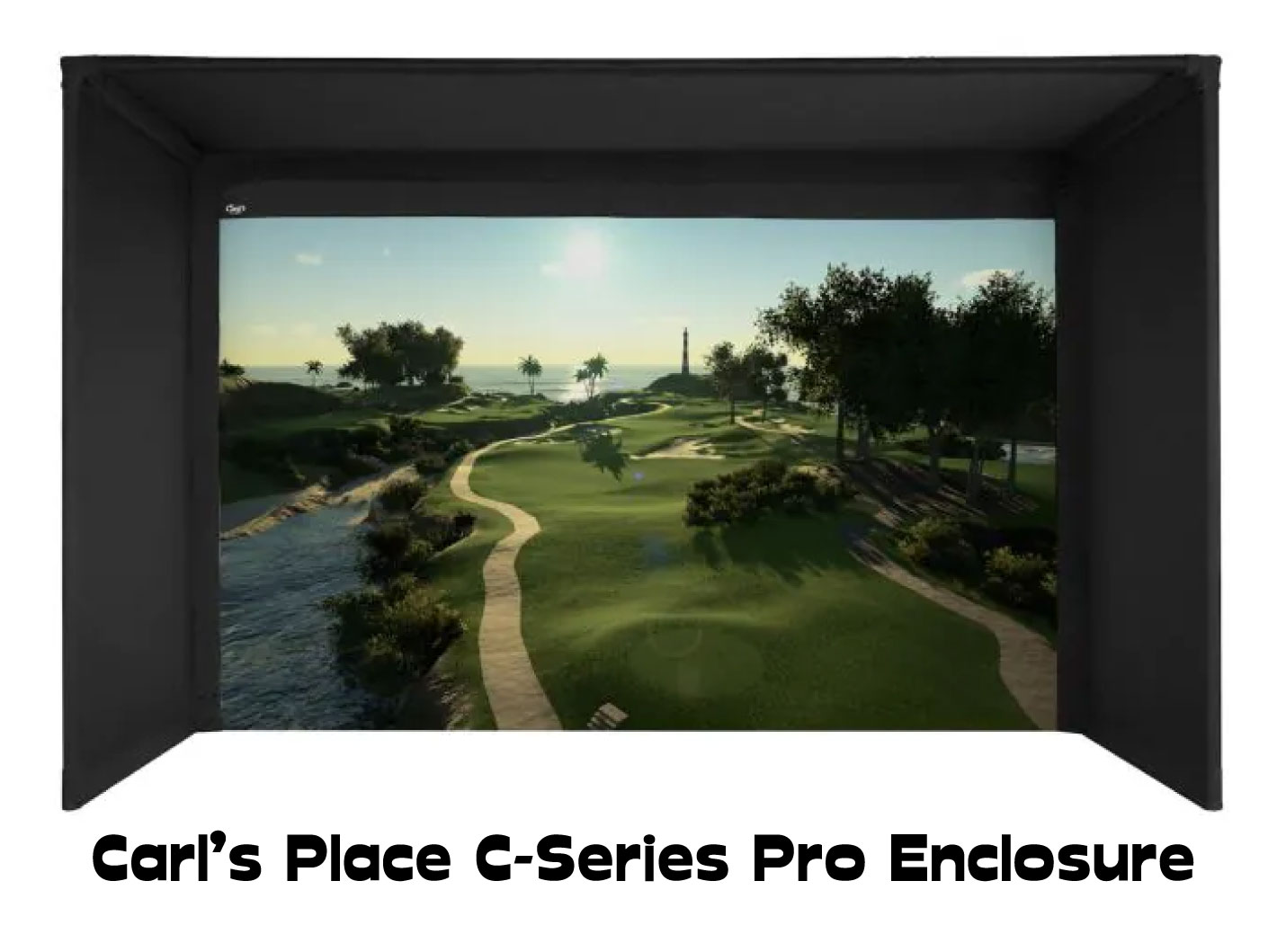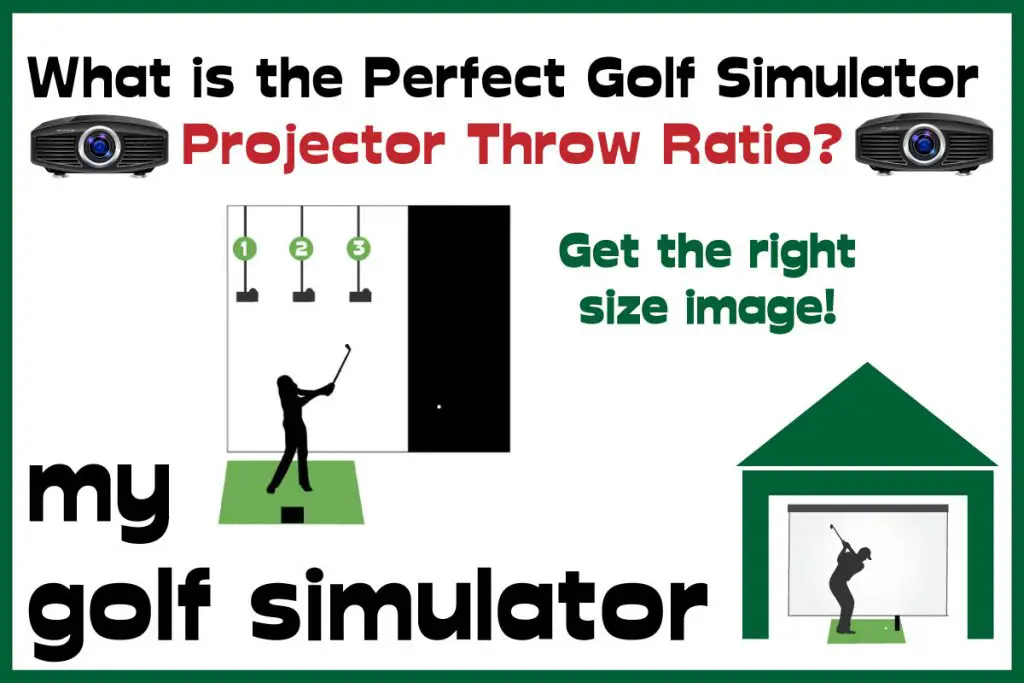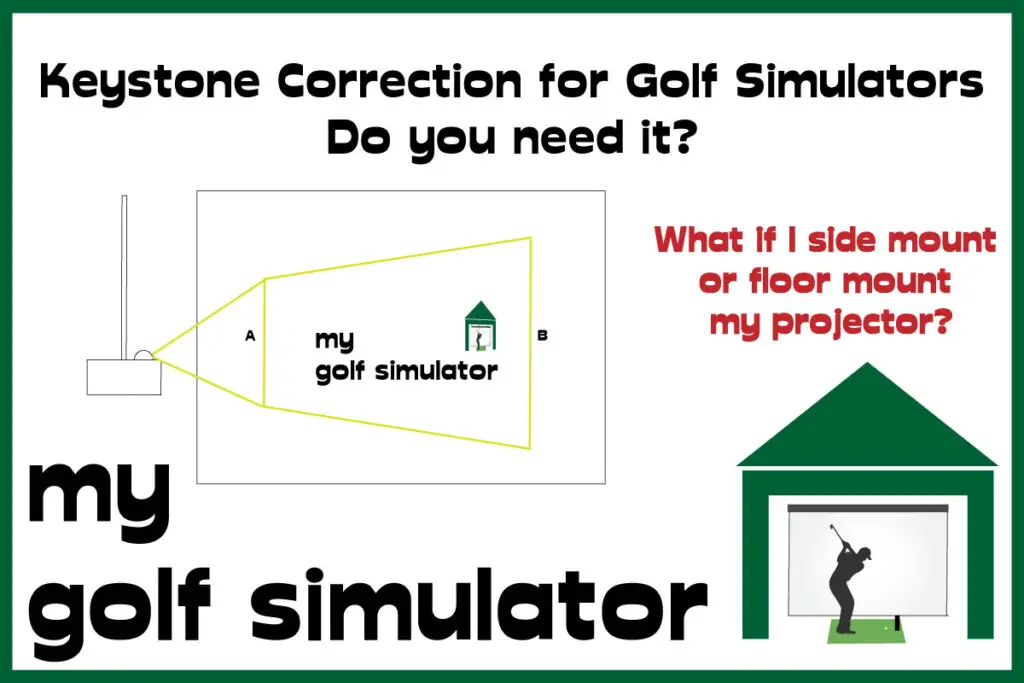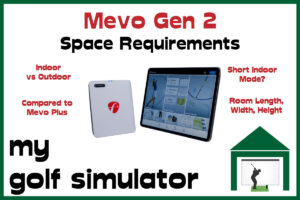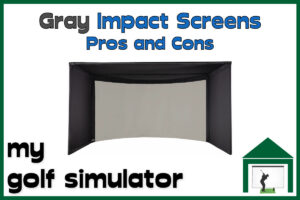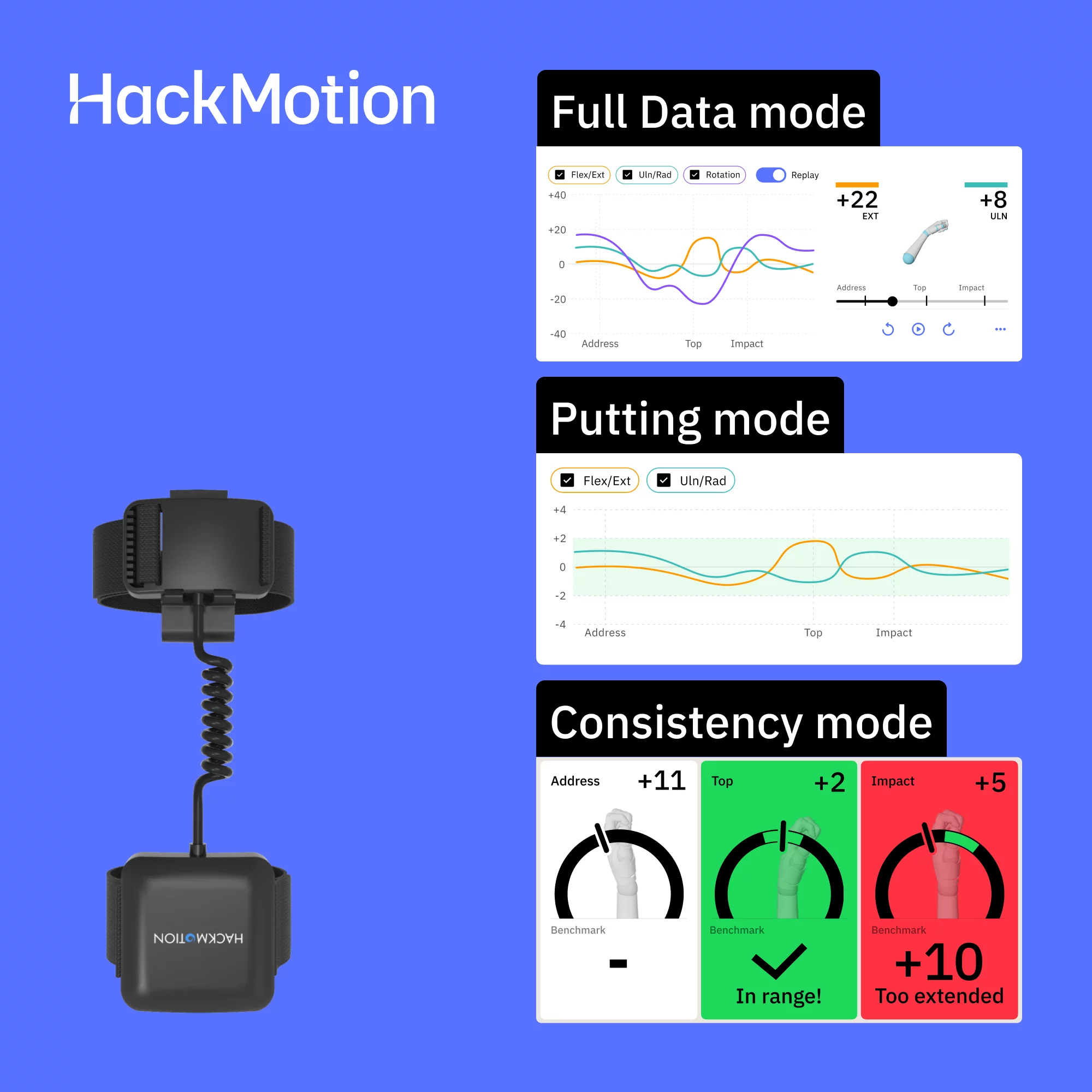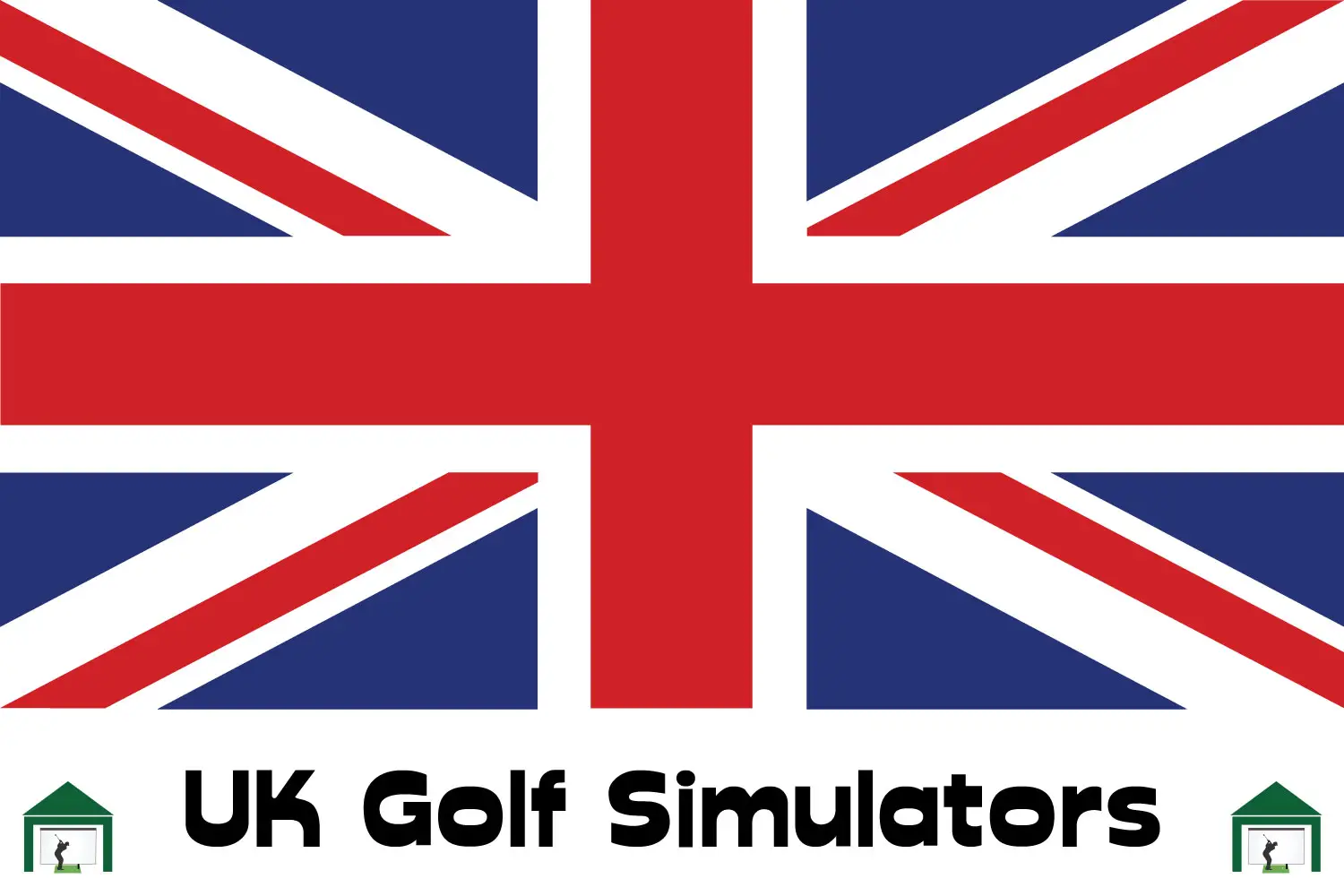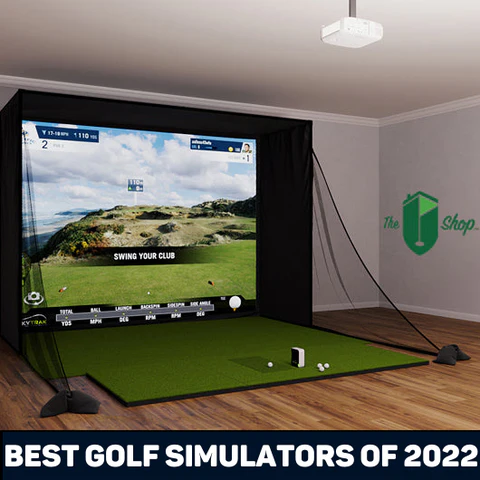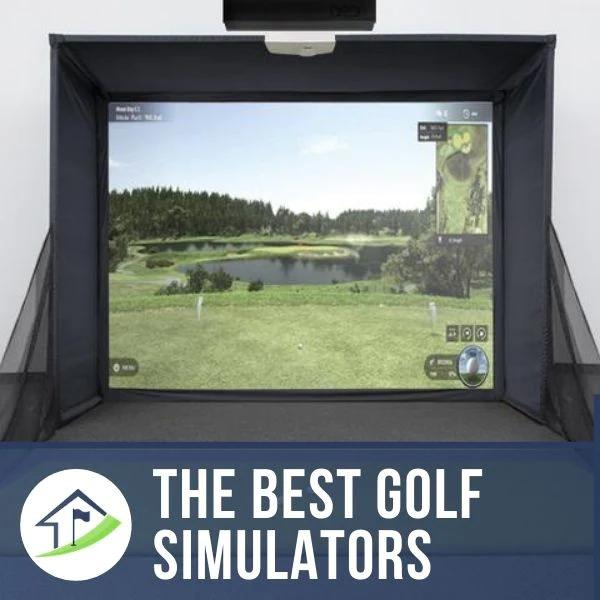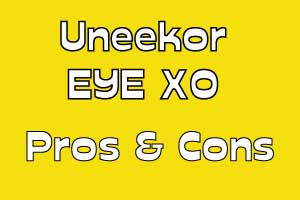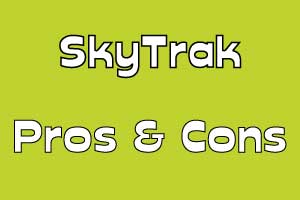Golf Mode – Do You Need It In Your Simulator Projector?
Posted in Projectors
When you’re setting up a golf simulator, the projector can make or break the experience. Many models now advertise a dedicated “Golf Mode”, promising brighter skies, more natural turf colors, and visuals tuned specifically for golf. But is this just marketing fluff, or does it really solve the problems golfers face indoors?
Plenty of players run into the same issues: grass that looks radioactive green, skies that appear washed out, awkward aspect ratios that leave black bars or stretched pixels, and hours lost fiddling with settings to get the picture right.
Quick Verdict
Golf mode isn’t essential for building a great simulator, but it is a welcome addition. The preset takes care of the color tuning, contrast, and sharpness that golfers may spend time dialling in manually. If your projector includes it, you’ll get more realistic greens and skies with minimal effort. If it doesn’t, you can still achieve the same results through manual calibration. Think of golf mode as a convenience feature, not a dealbreaker in your buying decision.
This guide will cut through the confusion. We’ll break down what projector golf modes actually do, highlight the latest innovations in 2025 models, and show you how to pick and configure a projector that works seamlessly with your simulator setup.
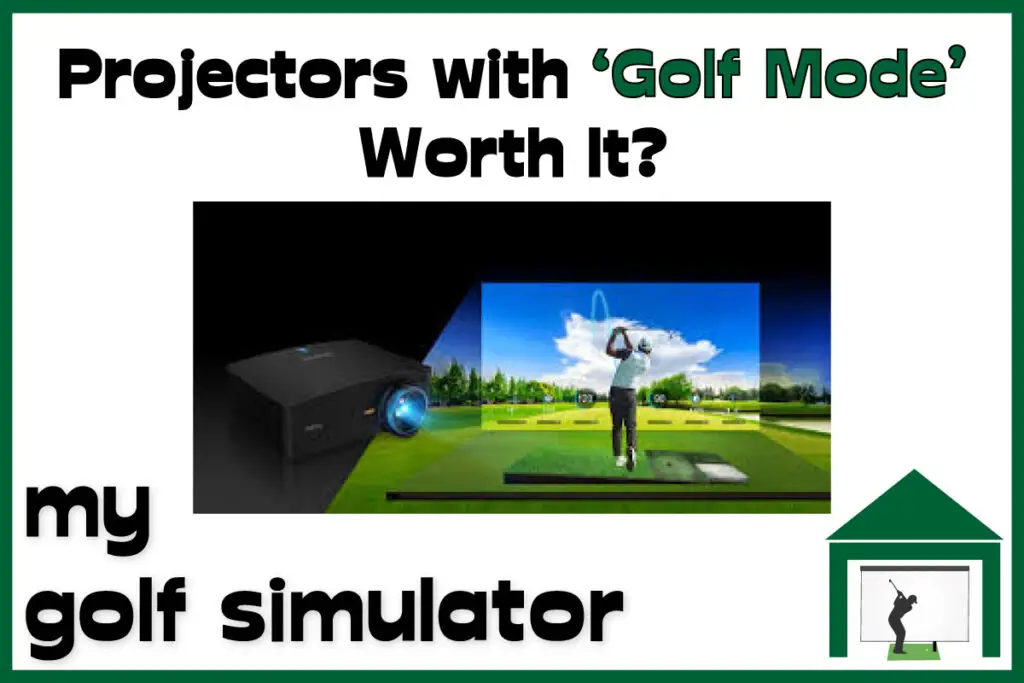
What is ‘Golf Mode’ in Projectors?
Golf Mode is a preset you’ll find on some modern projectors that’s specifically tuned for golf simulators. Instead of a one-size-fits-all picture mode like “Cinema” or “Game,” it’s designed to make virtual courses look more lifelike while keeping setup as simple as possible.
At its core, Golf Mode adjusts a few key things:
- Color tuning – boosting greens so turf looks rich without oversaturation, balancing blues for natural skies, and deepening shadows for realistic contrast.
- Brightness and contrast profiles – optimized to keep the image clear whether you’re in a darker simulator room or one with some ambient light.
- Sharpness presets – dialed in so ball flight and course detail remain crisp, even on large impact screens.
Manufacturers often bundle Golf Mode with extra convenience features that help with the unique demands of simulators. These can include:
- Screen Fill technology that reformats the picture to match unusual aspect ratios like 1:1 or 4:3.
- Auto aspect detection and Auto Screen Fit, so the projector instantly locks onto the impact screen shape without manual graphics card tweaking.
- Short-throw mapping and intelligent lens systems that make it easier to mount the projector close to the hitting zone without distortion or shadows.
In short, Golf Mode isn’t just about prettier greens—it’s about combining visual tuning with setup shortcuts that make your simulator look right, straight out of the box.

Why Manufacturers Add a Dedicated Golf Mode
Projector brands haven’t added a dedicated golf mode by accident. It’s there to solve pain points that simulator users complain about all the time.
The first is setup speed. Instead of spending hours tweaking gamma curves, brightness, and color balance, you can press one button and be most of the way there.
The second is perceived realism. By emphasizing greens, skies, and shadow detail, manufacturers can make the on-screen course feel more lifelike, which adds to the immersion.
It’s also a way to stand out in a competitive market. A projector that says “built for golf simulators” is more attractive than one that only lists cinema or gaming specs.
What Manufacturers Change: Saturation Boost, Selective Hue Shifts, Contrast Curve Adjustments
Technically, golf mode works by applying color correction and picture presets tailored to golf. Greens are adjusted so fairways and putting surfaces look vibrant without drifting into neon.
Blues are balanced for clear, natural skies. Contrast is tuned so bright areas like sunlit fairways don’t wash out while darker trees and shadows still hold detail.
Many projectors also slightly sharpen the image. This helps ball flight and course textures look crisp from tee to green.
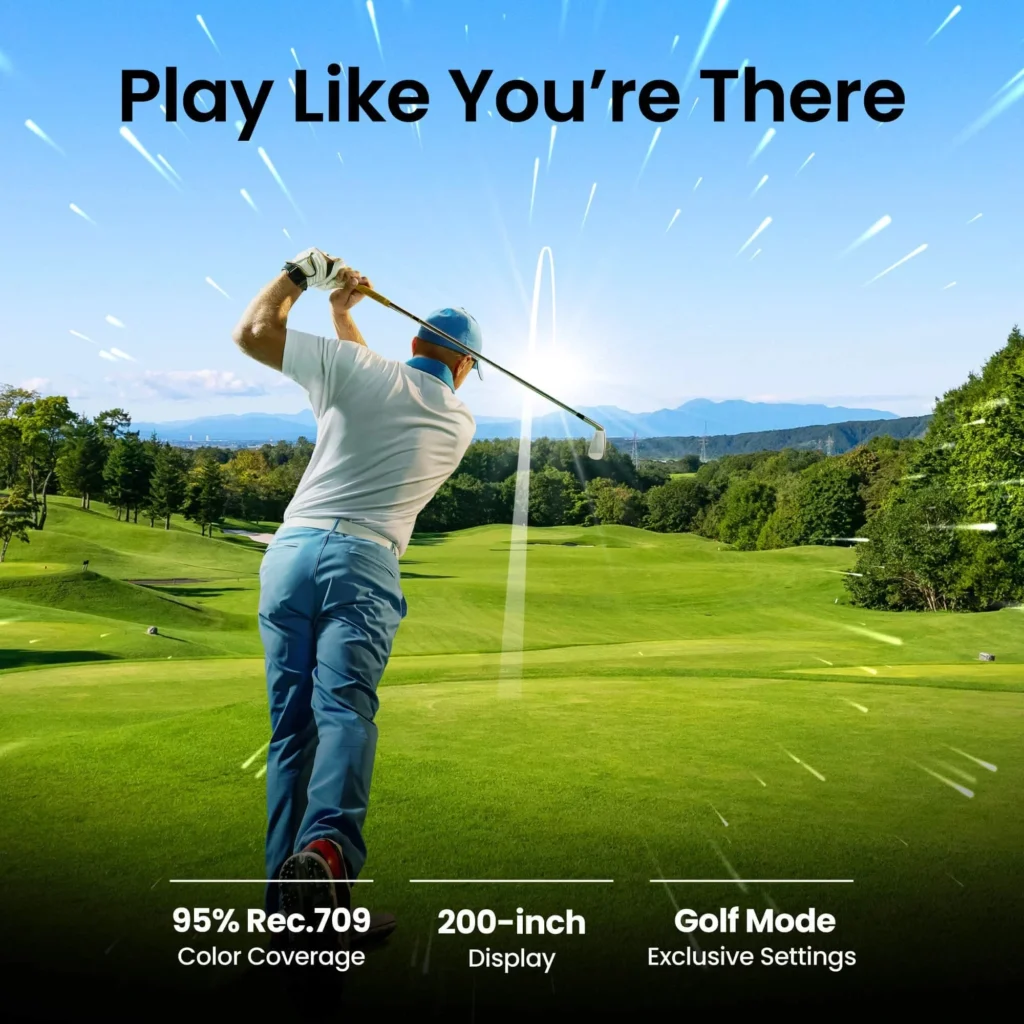
Under the hood, manufacturers lean on established video standards. Most golf projectors advertise over 90% coverage of the Rec.709 color space, the long-standing benchmark for HDTV.
A few high-end models claim support for the wider Rec.2020 standard used in HDR. In practice, simulator software rarely outputs HDR, so Rec.709 accuracy is still the practical baseline.
Golf mode isn’t reinventing the wheel. It’s packaging proven standards in a way that makes sense for golfers who want great visuals without a manual calibration session.
Aspect Ratio and Pixel Mapping Technologies
Golf projectors often pair these visual tweaks with smarter geometry tools. Screen Fill and Auto Screen Fit functions detect your impact screen’s shape and reformat the image automatically.
Instead of stretching pixels or leaving black bars, the projector communicates with your PC to scale the image correctly. This ensures that a 4K signal still looks sharp even if you’re running a non-standard aspect ratio like 4:3 or 1:1.

Pixel-perfect mapping matters because many simulators use square or nearly square screens in garages and basements. Without intelligent scaling, you’d lose detail or end up with distorted ball flights. With it, you keep maximum pixel density no matter what screen ratio you’re running.
Which Projectors have ‘Golf Mode’?
Take a look at our list of recommended projectors and the column labelled ‘Golf Mode Option’:
| Projector Model | Buy Now | Resolution | Lumens | Throw Ratio | Contrast Ratio | Aspect Ratio (Native) | Aspect Ratios (in settings) | Golf Mode Option | Lens Shift | Keystone Correction | Light Source |
|---|---|---|---|---|---|---|---|---|---|---|---|
| BenQ TH671ST | Buy Now! | 1080p (1920 x 1080) | 3000 | 0.69–0.83 | 10,000:1 | 16:9 | Auto; 16:9; 4:3 | No | None | Vertical ±40° | Lamp |
| BenQ LU710 | Buy Now! | WUXGA (1920 x 1200) | 4000 | 1.13–1.46 | 3,000,000:1 (dynamic) | 16:10 | Auto; 16:10; 16:9; 4:3; Real | Yes | None | 2D: H/V ±30° (Corner Fit) | Laser |
| BenQ AH500ST | Buy Now! | 1080p (1920 x 1080) | 4000 | 0.499 | 3,000,000:1 (dynamic) | 16:9 | Auto; 16:9; 4:3; 16:10; Real | Yes | None | H/V ±30° | Laser |
| BenQ AH700ST | Buy Now! | 1080p (1920 x 1080) | 4000 | 0.69–0.83 | 3,000,000:1 (dynamic) | 16:9 | Auto; 16:9; 4:3; 16:10; Real | Yes | None | 3D: H/V ±30° + Rotation ±30° | Laser |
| BenQ TK710STi | Buy Now! | 4K UHD (3840 x 2160) | 3200 | 0.69–0.83 | 600,000:1 (dynamic) | 16:9 | Auto; 16:9; 4:3 | Yes | None | 3D: H/V ±30° + Rotation ±30° | Laser |
| Optoma ZH450ST | Buy Now! | 1080p (1920 x 1080) | 4200 | 0.496 | 2,000,000:1 (dynamic) | 16:9 | 16:9; 16:10; 4:3 | No | None | H/V ±30° | Laser |
| Panasonic PT‑VMZ51 | Buy Now! | WUXGA (1920 x 1200) | 5200 | 1.09–1.77 (1.09–2.21 with Digital Zoom Extender) | 3,000,000:1 (dynamic) | 16:10 | 16:10; 16:9; 4:3 | No | H ±20%, V +44% | H ±35°, V ±25° | Laser (3LCD) |
| BenQ AK700ST | Buy Now! | 4K UHD (3840 x 2160) | 4000 | 0.69–0.83 | 3,000,000:1 (dynamic) | 16:9 | 16:9; 16:10 (Auto Screen Fit) | Yes | None | 3D: H/V ±30° + Rotation ±30° | Laser |
| LG ProBeam BU53RG | Buy Now! | 4K UHD (3840 x 2160) | 5000 | 0.94–1.14 | 3,000,000:1 (dynamic) | 16:9 | 16:6; 16:9; 16:10; 21:9; 4:3 | No | H ±20%, V ±50% | Advanced edge adjustment & warping (4/9/15/25‑point) | Laser |
| BenQ LK936ST | Buy Now! | 4K UHD (3840 x 2160) | 5100 | 0.81–0.89 | 3,000,000:1 (dynamic) | 16:9 | 5 selectable (incl. 16:9/16:10/4:3/Real) | Yes | H ±23%, V ±60% | 3D: H/V ±40° + Rotation ±40°; Warping | Laser |
| EIKI EK-308U | Buy Now! | WUXGA (1920 x 1200) | 6000 | 1.07–1.75 | 10,000:1 | 16:10 | 16:10; 16:9; 4:3 | No | Vertical ±45%, Horizontal ±9% | Vertical ±30°, Horizontal ±15° | 3LCD (Lamp) |
| Optoma ZW350ST | Buy Now! | WXGA (1280 x 800) | 3600 | 0.521:1 | 300,000:1 | 16:10 | 16:10; 16:9; 4:3 | Yes | None | Vertical ±15° | Laser (30,000 hours life) |
Why Short-Throw Ratios Are Standard in Golf Simulators
Most golf simulators use short-throw projectors with ratios between 0.5 and 0.8. This lets you mount the projector close to the impact screen, keeping it out of the hitting zone and avoiding distracting shadows from your swing.
Short-throw optics are designed to spread the image wide from a short distance. That makes them ideal for garages, basements, and purpose-built enclosures where space is limited.
Modern golf projectors also add tools that adapt to these tight setups. Motorized lenses and lens shift allow you to fine-tune placement without physically moving the projector. Digital keystone correction and auto-edge detection use onboard sensors to square up the image instantly, even if the projector isn’t perfectly aligned.
These geometry tools often work hand-in-hand with golf modes. Once the projector locks onto your impact screen edges, the golf mode presets handle color and contrast, giving you an accurate picture without hours of calibration.
The end result is a clean, sharp image that fits your screen shape, stays in focus, and shows the course the way it was meant to look—all while keeping the projector safely out of your backswing.
Further Recent Innovations in Golf Projectors in 2025
Over the past two years, projector makers have introduced features that take most of the pain out of simulator setup. The biggest leap forward has been Auto Screen Fit and Screen Fill. These tools automatically detect your screen’s shape, scale the image correctly, and even communicate resolution settings back to your PC. That means no more late-night battles with GPU control panels or custom resolution hacks.

Another major step has been the use of onboard cameras and AI-assisted calibration. Projectors can now scan the impact screen, recognize its edges, and adjust focus and tilt automatically. In practice, that means you can press a button and have a perfectly squared-up image in seconds, instead of fiddling with keystone menus or climbing a ladder.
Golf projectors are also moving toward environment mapping, where sensors detect room conditions like throw distance, angle, and even ambient light. The projector then adapts its brightness and geometry to suit your specific space.
At the same time, 4K has become the new baseline for premium models. This isn’t just about resolution—it’s about maintaining pixel density on non-standard screens. With smart pixel remapping, you can run 4:3 or 1:1 aspect ratios without losing detail, something older projectors struggled with badly.
Together, these innovations are making golf projectors less about manual setup and more about plug-and-play accuracy, with visuals that hold up in just about any simulator environment.
Why These Changes Matter for Average Golfer
The recent upgrades in golf projectors aren’t just technical gimmicks. They translate directly into faster installation, sharper images, and a lot less frustration for the end user. What used to take hours of tweaking now happens automatically, so you spend more time playing and less time troubleshooting.
Image fidelity has also improved. Features like pixel remapping and auto-edge detection mean you get crisp visuals on any screen shape, without the stretching or soft focus that plagued older setups. And by removing the need for software workarounds, the whole experience feels more like plug-and-play.
Evergreen Projector Requirements
Some fundamentals haven’t changed. Golf simulators still rely on short throw lenses with ratios between 0.5 and 0.8 to keep the projector out of the hitting zone.
Brightness remains key, with 3,000–4,000 lumens the sweet spot for clear images even in rooms with some ambient light.
Modern simulators also demand sealed laser engines that are dust-proof, eliminating the filter cleaning required by older lamp-based models.
Color accuracy is still benchmarked against Rec.709, with >90% coverage ensuring that greens and skies look realistic. And multiple aspect ratio support—from 16:9 widescreen to 1:1 garage setups—remains a must.
Outdated Practices Now Avoided
A lot of what frustrated early golf simulator owners has now been engineered out. Manual GPU custom resolution dialing is no longer required, thanks to automatic resolution communication between projector and PC.
Extensive manual keystone corrections are being replaced by auto-fit and tilt correction tools.
And the days of climbing ladders to clean projector filters are mostly gone, with sealed laser engines now the standard.
In short, the basics remain the same, but the headaches have been stripped away.
Advanced Features and Future Trends
Golf projectors are already leaning heavily on AI-powered calibration, and that trend is only going to accelerate. Today’s models use onboard cameras and algorithms to detect screen edges, map throw distance, and correct tilt automatically. In the near future, expect even smarter systems that adapt brightness, contrast, and color profiles to your room environment without you touching a button.
The visual demands of simulators are also rising. 4K has become the norm, and with platforms like Unreal Engine 5 driving hyper-realistic course graphics, pixel density and color accuracy are more important than ever. Wider color gamuts and tighter contrast curves will matter as software pushes closer to lifelike visuals.
Connectivity is another area to watch. Wireless streaming and low-latency codecs are starting to make their way into golf projectors, reducing the reliance on bulky HDMI runs. Cloud-driven simulators could soon allow players to stream course data directly to the projector, though practical adoption may still be a few years away as protocols stabilize and lag times shrink.
Sustainability is becoming a selling point as well. Laser light sources are already more efficient than lamps, cutting energy use by around 15%. Manufacturers are also starting to incorporate recycled materials into projector housings, and tightening regulations will likely push energy efficiency even further. For golfers, that means projectors that last longer, run cooler, and carry a smaller footprint.
The big picture is clear: golf projectors are moving toward smarter, sharper, and greener designs that will make future simulators easier to set up and more immersive than ever.
Final Thoughts
Golf Mode is one of those features that sounds like a gimmick until you understand what it does. For most golfers, it’s not strictly essential—you can still build a great simulator with careful calibration and the right projector specs. But it does make life easier. One button gives you richer turf colors, more natural skies, and sharper contrast, without hours of menu diving or GPU hacks.
The real story is how much projectors have evolved in the last couple of years. Auto Screen Fit, Screen Fill, and onboard cameras now handle alignment and aspect ratios automatically. Laser engines cut out filter cleaning. And 4K resolution is fast becoming the baseline, keeping detail crisp even on square and 4:3 screens.
The evergreen requirements haven’t changed: short throw optics, 3,000–4,000 lumens, dust-proof sealed engines, and >90% Rec.709 accuracy are still the bedrock of a good setup. What’s different now is how much faster, simpler, and more consistent modern projectors make the experience.
So, is Golf Mode essential? Not really. But if your projector offers it, you’ll appreciate the convenience and the picture tweaks tailored to golf. And if you’re choosing between models, the table below will help you see at a glance which ones include Golf Mode and which rely on manual setup.
| Projector Model | Buy Now | Resolution | Lumens | Throw Ratio | Contrast Ratio | Aspect Ratio (Native) | Aspect Ratios (in settings) | Golf Mode Option | Lens Shift | Keystone Correction | Light Source |
|---|---|---|---|---|---|---|---|---|---|---|---|
| BenQ TH671ST | Buy Now! | 1080p (1920 x 1080) | 3000 | 0.69–0.83 | 10,000:1 | 16:9 | Auto; 16:9; 4:3 | No | None | Vertical ±40° | Lamp |
| BenQ LU710 | Buy Now! | WUXGA (1920 x 1200) | 4000 | 1.13–1.46 | 3,000,000:1 (dynamic) | 16:10 | Auto; 16:10; 16:9; 4:3; Real | Yes | None | 2D: H/V ±30° (Corner Fit) | Laser |
| BenQ AH500ST | Buy Now! | 1080p (1920 x 1080) | 4000 | 0.499 | 3,000,000:1 (dynamic) | 16:9 | Auto; 16:9; 4:3; 16:10; Real | Yes | None | H/V ±30° | Laser |
| BenQ AH700ST | Buy Now! | 1080p (1920 x 1080) | 4000 | 0.69–0.83 | 3,000,000:1 (dynamic) | 16:9 | Auto; 16:9; 4:3; 16:10; Real | Yes | None | 3D: H/V ±30° + Rotation ±30° | Laser |
| BenQ TK710STi | Buy Now! | 4K UHD (3840 x 2160) | 3200 | 0.69–0.83 | 600,000:1 (dynamic) | 16:9 | Auto; 16:9; 4:3 | Yes | None | 3D: H/V ±30° + Rotation ±30° | Laser |
| Optoma ZH450ST | Buy Now! | 1080p (1920 x 1080) | 4200 | 0.496 | 2,000,000:1 (dynamic) | 16:9 | 16:9; 16:10; 4:3 | No | None | H/V ±30° | Laser |
| Panasonic PT‑VMZ51 | Buy Now! | WUXGA (1920 x 1200) | 5200 | 1.09–1.77 (1.09–2.21 with Digital Zoom Extender) | 3,000,000:1 (dynamic) | 16:10 | 16:10; 16:9; 4:3 | No | H ±20%, V +44% | H ±35°, V ±25° | Laser (3LCD) |
| BenQ AK700ST | Buy Now! | 4K UHD (3840 x 2160) | 4000 | 0.69–0.83 | 3,000,000:1 (dynamic) | 16:9 | 16:9; 16:10 (Auto Screen Fit) | Yes | None | 3D: H/V ±30° + Rotation ±30° | Laser |
| LG ProBeam BU53RG | Buy Now! | 4K UHD (3840 x 2160) | 5000 | 0.94–1.14 | 3,000,000:1 (dynamic) | 16:9 | 16:6; 16:9; 16:10; 21:9; 4:3 | No | H ±20%, V ±50% | Advanced edge adjustment & warping (4/9/15/25‑point) | Laser |
| BenQ LK936ST | Buy Now! | 4K UHD (3840 x 2160) | 5100 | 0.81–0.89 | 3,000,000:1 (dynamic) | 16:9 | 5 selectable (incl. 16:9/16:10/4:3/Real) | Yes | H ±23%, V ±60% | 3D: H/V ±40° + Rotation ±40°; Warping | Laser |
| EIKI EK-308U | Buy Now! | WUXGA (1920 x 1200) | 6000 | 1.07–1.75 | 10,000:1 | 16:10 | 16:10; 16:9; 4:3 | No | Vertical ±45%, Horizontal ±9% | Vertical ±30°, Horizontal ±15° | 3LCD (Lamp) |
| Optoma ZW350ST | Buy Now! | WXGA (1280 x 800) | 3600 | 0.521:1 | 300,000:1 | 16:10 | 16:10; 16:9; 4:3 | Yes | None | Vertical ±15° | Laser (30,000 hours life) |
Frequently Asked Questions
Q: What is the primary benefit of using “Golf Mode” on a projector?
A: It gives you faster, manufacturer-tuned color and contrast adjustments that make turf and sky look more realistic while cutting down setup time.
Q: Do I have to use the projector’s golf mode or can I calibrate manually?
A: You can absolutely calibrate manually for precision, but golf mode is a solid starting point and time-saver. Most golfers fine-tune from there.
Q: Will a 4K projector give me better accuracy on a 4:3 simulator screen?
A: Yes. With Screen Fill or Auto Screen Fit, a 4K projector can pack more pixels into non-standard aspect ratios like 4:3 or 1:1, giving you sharper visuals.
Q: What throw ratio do I need for a garage golf simulator?
A: Aim for a short-throw between 0.5 and 0.8:1. That keeps the projector behind the hitting line and minimizes swing shadows.
Q: Can I rely on automatic features like Auto Screen Fit, or should I still check settings manually?
A: Automatic features handle most of the heavy lifting, but it’s always worth checking pixel mapping, color profile, and disabling any unwanted image processing.
Q: How bright should the projector be for a typical home simulator?
A: A range of 3,000 to 4,000 lumens is ideal. It’s bright enough for clear color and contrast, even with moderate ambient light.
Q: Are laser projectors worth the extra cost for golf simulators?
A: Yes. Sealed laser engines are more durable, handle dust better, require no filter cleaning, and often include the latest golf-mode features.
Mevo Gen 2 Space Requirements
Gray Impact Screens – Pros and Cons
ABOUT THE AUTHOR
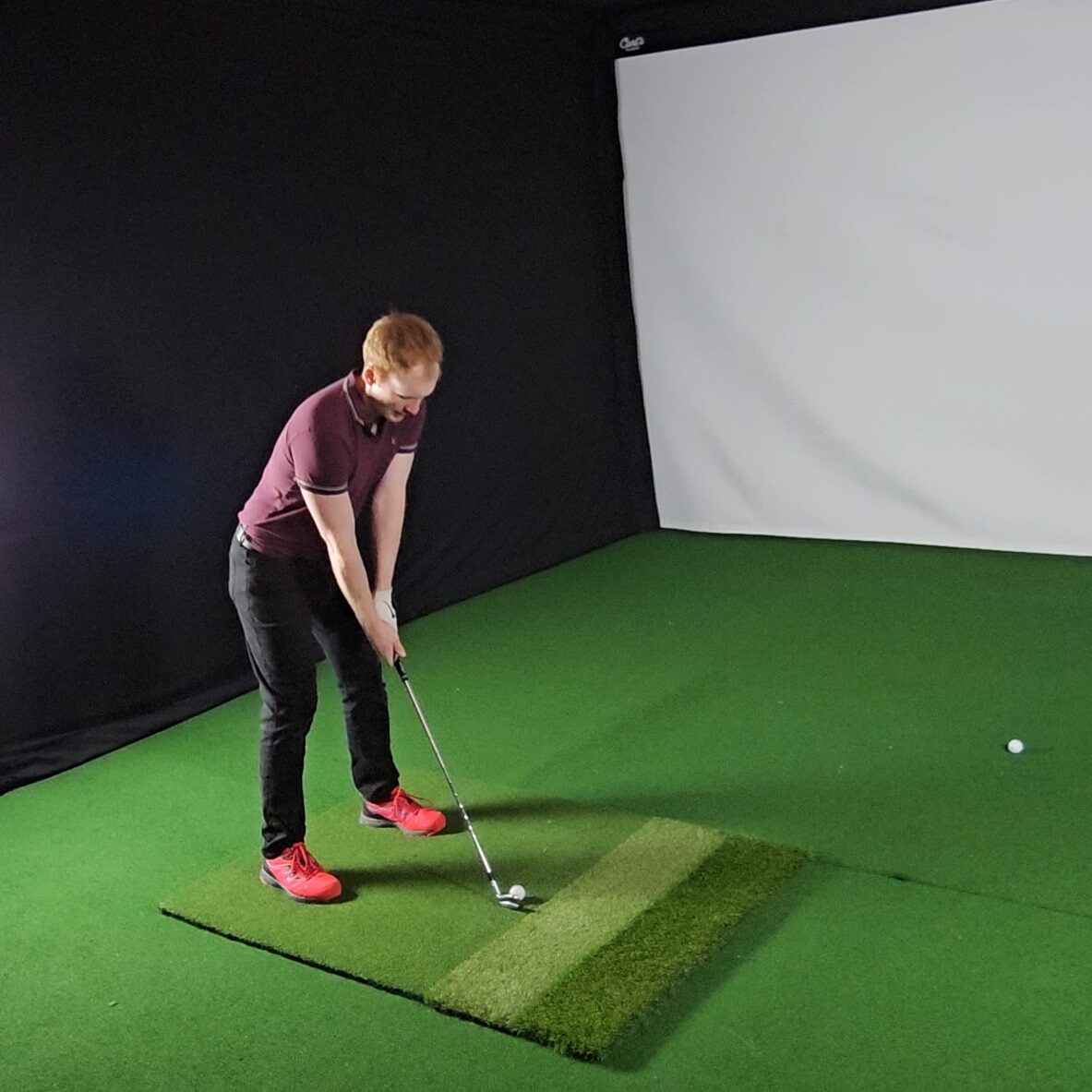
Hello! My name is Alex and it is my mission to bring you all the information you need to build your own home golf simulator! I hope mygolfsimulator.com helps you on your journey to better golf at home!
LEGAL INFORMATION
On this site, you'll find articles on all aspects of building a golf simulator. I will also link to other sites where you can buy some of the simulator components. Some of these links may be affiliate links, which means if you click them I gain a small commission at no extra cost to you. This really helps out me and my site so thank you in advance! mygolfsimulator.com and all related social media accounts are property of Awonline LTD.
